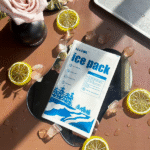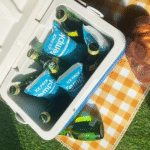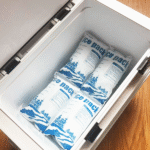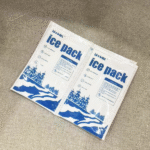Quer salada crocante ao pôr do sol em vez de murcha do meio-dia? UM almoço com gelo seco reduz as temperaturas mais frias abaixo de 4°C em minutos e as mantém assim por 24 horas completas - sem água derretida, sem boom de bactérias. Este guia mestre combina as melhores táticas dos testes de campo, Osha & Regras da TSA, e tecnologia de ventilação inteligente para que você possa dimensionar, pacote, viaje e descarte gelo seco sem suposições. Acompanhe e você comerá refeições frescas de restaurante em qualquer lugar - metrô, cume ou voo noturno.
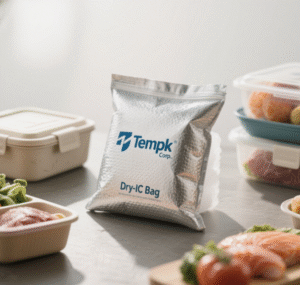
Por que DryIce vence (Mesa)
| Métrica | Secagem | Pacote de gel | Gelo d'água | Impacto no mundo real |
|---|---|---|---|---|
| Temperatura de mudança de fase | –78,5 ° C. | –1––20°C | 0 ° c | Gelo seco combate picos extremos de calor |
| Calor latente (kJ·kg‑¹) | 571 | 260–320 | 334 | Resfriamento mais longo por grama |
| Resíduo | Nenhum (gás) | Líquido | Líquido | Sem rótulos encharcados ou risco de mofo |
| Ciclos de reutilização | Solteiro | 15–30 | Ilimitado | Gelo seco para dias críticos; gel para rotina |
Remover: Em deslocamentos ou voos a 40°C, gelo seco prolonga o tempo seguro 2× mais longo que o gel.
Fórmula de dimensionamento verificada em campo
| Volume | ≤26°C | 27–35 ° C. | Amigável para viagens aéreas?* |
|---|---|---|---|
| 2 O bento | 170 g | 210 g | ✔ |
| 6 Bolsa L | 510 g | 660 g | ✔ |
| 12 Pacote L | 1.0 kg | 1.3 kg | • verificado apenas |
| 20 família L | 1.7 kg | 2.2 kg | ✖ |
*TSA 2025 boné de passageiro: 2.5 kg gelo seco ventilado.
Nota de campo: Um professor de Phoenix usou 480g em uma sacola de 6L em um dia de 44°C; os wraps de frango permaneceram ≤3,5°C por 10h.
Plano de embalagem passo a passo (6 min)
-
Pré -Chill recipiente 10min.
-
Insira a almofada espaçadora para bloquear congelamento-queimadura.
-
Carregar comida-mais pesado primeiro, verdes de nível intermediário, topo frágil.
-
Posicione a placa de gelo seco no topo; dissipadores de CO₂ frio.
-
Adicionar sensor Bluetooth para registros ativos.
-
Selo & ventilação: 2 rachadura na tampa mm ou plugue inteligente NanoVent™.
Seguro para crianças & Lista de verificação no local de trabalho
-
Luvas ou pinças – congelamento < 2s na pele.
-
Duas aberturas de 3 mm mantêm a pressão interna < 1 psi.
-
Alarmes de crachá de CO₂ a 5.000 ppm (OSHA 8h TWA).
-
≤100g para merenda escolar; etiqueta “DryIce – Ventilado”.
-
Quebre a janela do carro se estiver carregando > 1kg.
Confronto de contêineres (12 h Teste)
| Material | Temperatura Média (12 h) | Penalidade de peso | Melhor uso |
|---|---|---|---|
| Aço a vácuo | 34 ° f | +425 g | Voos, metrôs |
| Rotomold PE | 36 ° f | +620 g | Camping, local de trabalho |
| Espuma EPS | 38 ° f | +170 g | Orçamento, reciclagem |
| Neoprene | 44 ° f | +110 g | Recados curtos |
2025 Tecnologia & Tendências
-
Tampas NanoVent™ sangramento automático CO₂ > 2 psi—+12 % de tempo de espera.
-
Lajes Bio-Shell: 40 % fibra vegetal, compostagem caseira em 6 meses.
-
Forros de grafeno: +18 % Valor R com meia espessura de parede.
-
Tags de sublimação NFC mostrar a massa restante no aplicativo.
Perspectivas de mercado: refrigerantes pessoais para almoço ↑10,8% CAGR até 2027, impulsionado por deslocamentos mais longos e trabalho no local.
Perguntas frequentes
Quanto tempo duram 500g em uma sacola de 6L? 10–14h a 30°C quando ventilado.
O gelo seco pode tocar na salada? Não – use um espaçador de 3 mm para evitar queimaduras de congelamento e carbonatação.
Regras do avião? Até 2,5kg, ventilado, rotulado, declarado na TSA.
Eliminação de sobras? Situado em uma bandeja de metal ao ar livre; sublima com segurança.
Maneira mais barata de comprar? Os balcões de peixes de mercearia vendem por onça - ideal para almoços diários.
Créditos do autor
Dr.. Nia Kwon, Doutorado—Auditor de logística da cadeia de frio, Cadeira ASTM F26.90.
Avery Chen, Mestrado—Especialista em segurança alimentar com 12 anos, Líder do laboratório piloto temporário.
Plano de ação & CTA
-
Download o grátis Medidor Tempk CO₂ App.
-
Ordem Kit inicial: 2 Placas Bio‑Shell+tampão NanoVent™.
-
Registro as temperaturas da sua primeira semana - compartilhe dados com 10% de desconto em recargas.
Pronto para refeições crocantes até o pôr do sol? Converse com um especialista em Tempk e crie seu kit de gelo seco personalizado hoje mesmo.
















